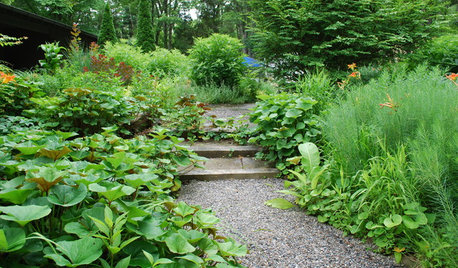Vegetable Bed in Blackland Prairie Clay
Pooua
9 years ago
Featured Answer
Sort by:Oldest
Comments (10)
centexan254 zone 8 Temple, Tx
9 years agoPooua
9 years agoRelated Professionals
Saint Louis Park Landscape Architects & Landscape Designers · Tempe Landscape Contractors · Cliffside Park Landscape Contractors · Dallas Landscape Contractors · East Lake-Orient Park Landscape Contractors · Fort Worth Landscape Contractors · Hawthorne Landscape Contractors · Long Beach Landscape Contractors · Miller Place Landscape Contractors · New Providence Landscape Contractors · Paramus Landscape Contractors · Porterville Landscape Contractors · Irvington Landscape Contractors · Quincy Driveway Installation & Maintenance · Wildomar Driveway Installation & Maintenanceearthworm73
9 years agoterry_neoh
9 years agopnbrown
9 years agoglib
9 years agocentexan254 zone 8 Temple, Tx
9 years agopnbrown
9 years agoPooua
9 years ago
Related Stories

GARDENING GUIDESHow to Stop Worrying and Start Loving Clay Soil
Clay has many more benefits than you might imagine
Full Story
GARDENING GUIDESGardening Solutions for Heavy Clay Soils
What’s a gardener to do with soil that’s easily compacted and has poor drainage? Find out here
Full Story
FRONT YARD IDEASBefore and After: Front Lawn to Prairie Garden
How they did it: Homeowners create a plan, stick to it and keep the neighbors (and wildlife) in mind
Full Story
LANDSCAPE DESIGNTour a New American Garden in New Jersey
See how James Golden built his garden in a depression with wet clay and rogue cedars
Full Story
EARTH DAY5 Ideas for a More Earth-Friendly Garden
Consider increasing the size of garden beds, filtering rainwater and using plants to reduce energy use
Full Story
FARM YOUR YARDHow to Farm Your Parking Strip
Get an up-close look at a thriving street-side edible garden, one of many sprouting up in Seattle
Full Story
GARDENING GUIDESInvite Cellophane Bees to Your Garden by Providing Patches of Bare Soil
Look for cellophane bees (Colletes) pollinating flowering trees and shrubs in U.S. gardens this spring
Full Story
CENTRAL PLAINS GARDENINGCentral Plains Gardener's May Checklist
Set out flowering shrubs for spectacular blooms, get veggies going and roll out the milkweed mat for butterflies
Full Story
MOST POPULARMeet a Lawn Alternative That Works Wonders
Carex can replace turfgrass in any spot, is low maintenance and adjusts easily. Add its good looks and you’ve got a ground cover winner
Full Story
FRONT YARD IDEAS10 Ideas for a Front-Yard Edible Garden Your Neighbors Will Love
Choosing attractive, well-mannered plants and sharing the bounty will go a long way toward keeping the peace
Full Story





tracydr